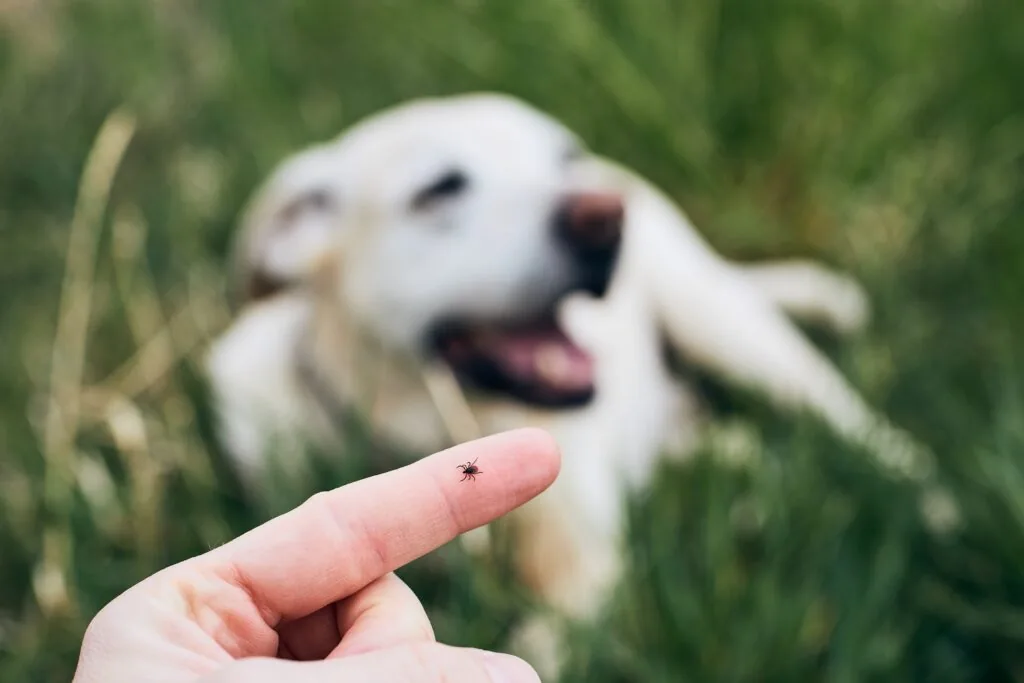Ear infections are common in dogs – especially dogs with floppy ears such as Blood Hounds, Poodles and Dachshunds. Dogs can be more prone to ear infections than humans because of the way their ear canals are shaped.
Types of Dog Ear Infections
There are three types of ear infections in dogs and each type affects a different part of the dog’s ear.
Otitis Externa
Otitis externa is the most common type of ear infection in dogs. With this type of ear infection, there is inflammation affecting the cells lining the external portion of the ear canal.
Otitis Media and Otitis Interna
Otitis media refers to an infection in the middle of the ear and otitis interna refers to an infection in the inner ear canal. Typically, otitis media and interna infections result from the spread of an external ear infection that may not have been treated in time. These two types of ear infections can be very dangerous and serious. If not treated quickly and properly, your dog may suffer from deafness or even facial paralysis.
Symptoms of Ear Infections in Dogs
Ear infections will usually cause a significant amount of pain and discomfort for a dog. There are a few signs and symptoms you can look for if you suspect your dog is battling an ear infection.
- Buildup of wax and/or discharge in the ear canal
- Head shaking or tilting
- Scratching at infected ear
- Rubbing ear on the floor or furniture
- Odor coming from the infected ear
- Redness and swelling of the ear canal
- Itchiness
- Crusting or scabs in the ear
- Swelling of the ear
If you notice your dog showing any of these signs, it is best to contact your veterinarian as soon as possible so your dog can be seen. The earlier your dog can begin treatment, the better. By having your dog seen and treated early, it can help to prevent more severe symptoms from developing.
Causes of Dog Ear Infections
A dog’s ear canal is more vertical compared to humans and is more likely to retain fluids. Infections can be caused by yeast, bacteria, or a combination of both. Puppies can have ear infections caused by ear mites.
There are some other factors that can contribute to ear infections in dogs:
- Moisture in the ear (this is a perfect environment for bacteria and yeast to grow)
- Autoimmune disorders
- Endocrine disorders
- Allergies
- Wax buildup
- Excessive cleaning
- Foreign bodies
- Ear canal injury
Any dog can develop an ear infection at any time. However, dogs with allergies and certain medical conditions are at a higher risk for developing an ear infection.
Preventing Ear Infections in Dogs
Basic prevention of an ear infection in your dog would be to regularly check your dog’s ears for debris and wax buildup. Always help keep your dog’s ears dry and well ventilated, especially after they have a bath or go for a swim.
Cleaning Your Dog’s Ears
If your dog is prone to ear infections, your veterinarian can prescribe an ear cleaning solution that has a special drying agent in it, but you should never apply it with Q-tips. Sticking a Q-tip inside your dog’s ear is dangerous and can cause serious damage. If your dog makes a sudden or quick movement, the Q-tip may go too far inside of their ear.
Grooming Around Your Dog’s Ears
Annual check-ups with your dog’s veterinarian as well as regular grooming can also be helpful preventative measures. Having a professional groomer trim your dog’s excess ear hair is a good way to help keep your dog’s ears clean and free of any bacteria or infection.
Dog Ear Infection Treatment Options
No two ear infections are the same, so treatments for ear infections in dogs can vary. Bacterial ear infections require antibiotics, fungal ear infections require fungicides, and parasite related ear infections require insecticides to be treated properly.
Talk with Your Veterinarian
If you suspect your dog has an ear infection, you should take them to the vet right away. You should never attempt to treat your dog’s ear infection at home without talking to your veterinarian first. Your veterinarian will typically begin by cleaning your dog’s ears to remove earwax and other buildup that may interfere with topical medications.
Medication
If your veterinarian prescribes your dog medicated eardrops or any other type of medication, make sure you finish the entire course of treatment. If you stop the medication once you notice your dog is feeling better, the infection may return because it hasn’t fully healed.
How to Properly Clean Your Dog’s Ears
You should never attempt to clean your dog’s ears with rubbing alcohol or hydrogen peroxide because these liquids can kill the healthy ear cells. The best tools to use to clean a dog’s ears are cotton balls or ear wipes to help clean the crevices and the earflap. Never use Q-tips or cotton swabs in your dog’s ear because you can cause serious damage or even rupture your dog’s eardrum.
Apply the liquid cleanser to your dog’s ear as directed. Once you have applied the liquid, close the earflap, and massage the base of the ears. This will help the liquid spread evenly throughout the ear. After massaging the ear for a few seconds, gently wipe the excess liquid with a cloth or cotton balls. The last thing you’ll want to do is apply the prescribed medication.
Birch Lake Animal Hospital Can Help
If your dog has chronic ear infections, your veterinarian can help you come up with a regular cleaning routine. Call (651) 426-2246 or use the online form to book an appointment at Birch Lake Animal Hospital!
Recent Posts
About Birch Lake Animal Hospital
The staff at Birch Lake Animal Hospital seeks to provide the best possible medical care for our highly-valued patients and clients.






